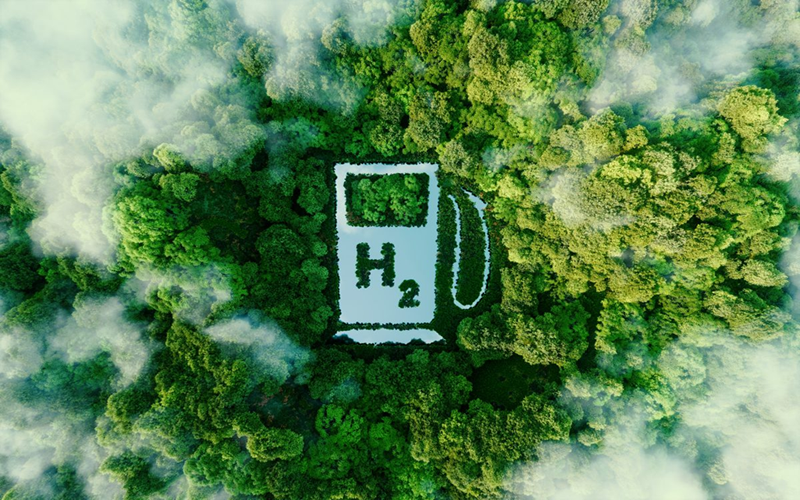
While the horrific COVID-19 catastrophe may be what many remember about 2020, it was also a historic year for global energy transition and the advancement of hydrogen technology. In connecting their pandemic response with longer-term aims, many governments announced efforts to utilize hydrogen as a vital energy source. Parallel to this, many nations, cities, and businesses declared net-zero goals for energy-related carbon dioxide emissions, highlighting the need for hydrogen.
Hydrogen is grouped into three categories—grey, blue and green—depending on how it is produced. Grey hydrogen is created from natural gas, or methane, using steam methane reformation but without capturing the greenhouse gases made in the process. Blue hydrogen on the other hand is grey hydrogen but with carbon capture and storage (CCS). At the end of the green scale is green hydrogen, produced using clean energy.
Energy transition is a process, not a destination. Therefore, the use of current assets should be continued while still reducing Green House Gas (GHG) emissions by retrofitting facilities with CCS. This is a way to manufacture hydrogen with fewer GHG emissions while increasing renewable energy capacity.
Blue hydrogen in particular could promote the development of a hydrogen market in the early phases of the energy transition. Notably, industrial activities like steel manufacturing need a constant flow of hydrogen; blue hydrogen could be a starting point, while producers ramp up production and storage capacity for green hydrogen to satisfy the continuous flow demand.

Ultimately, the only type of hydrogen that is suited for an entirely sustainable energy transition is green hydrogen. Water electrolysis, powered by renewable electricity, is the most viable technological alternative for creating green hydrogen in the long term.
There are various ways to manufacture hydrogen that rely on renewable energy, but apart from gasification using biogases, all technologies have yet to reach commercial maturity. However, low-cost solar and wind energy and technology advancements are bringing down the price of producing green hydrogen. These factors have boosted interest in green hydrogen produced by water electrolysis.
Over the past two years, momentum has grown, with more than 25 nations either adopting or declaring their desire to adopt national hydrogen strategies. By 2026, industry investors anticipate having at least 25 gigawatts of green hydrogen electrolyzer capacity. To achieve aggressive climate objectives and keep the increase in average world temperatures at 1.5 degrees Celsius, much steeper growth is still required in both renewable energy sources and green hydrogen capacity.
Within a decade, the cost of the generated green hydrogen might drop to below $1-2 per kilogram, which would be competitive. These pave the way for increased manufacturing capacity, new employment opportunities, and economic expansion.

But to get there, it is necessary to choose the best business model, build markets, and optimize the supply chain so that both developed and developing countries benefit equally from switching to a clean, reliable energy system.
The GCC has emerged as an epicenter of the global green hydrogen revolution. The UAE will launch its National Hydrogen Strategy next month, establishing a framework to position the country as an exporter of clean fuel and tap into its future potential. Meanwhile, Germany’s Uniper SE has teamed up with Masdar, one of the Middle East’s biggest renewable-energy firms, to produce green hydrogen in the UAE. The two companies will build a plant that will run on almost 1.3 gigawatts of solar power and is expected to produce hydrogen from 2026. In Saudi Arabia, utility developer ACWA Power last year signed financing agreements for $8.5 billion in investment for a large-scale hydrogen project expected to be commissioned in 2026.
Green hydrogen policies should be created to enable comparison with other energy sources, ensure consistency and compatibility with emissions for other commodities, and enables understanding of the impact of this energy carrier by policymakers and end users. Such policies provide the framework for national hydrogen strategies that specify a nation’s ambition for hydrogen and the level of assistance necessary to meet that ambition. They work as a guide for private operators in the hydrogen sector, aiding in the promotion of higher levels of financing. Ultimately, well-defined steps should be taken to increase hydrogen adoption through effective national policies.

Please wait....
Thank you for subscribing...